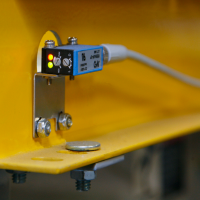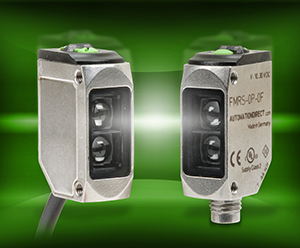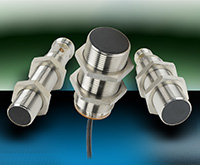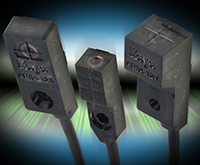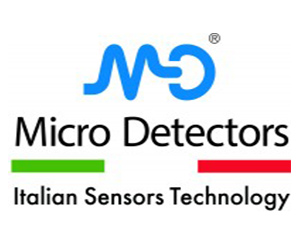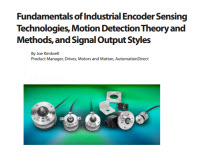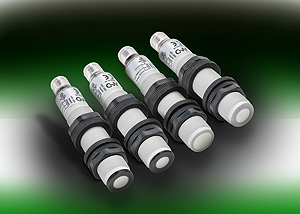Photoelectric, proximity and capacitive sensors are used in a wide variety of machines and industrial equipment, but selecting the best sensor for the job can be confusing. This blog post and the accompanying articles will help you sort out the best sensor for your application. During sensor selection, it’s important to understand sensor requirements and specifications…
AutomationDirect’s new FM series harsh duty photoelectric sensors are IP69K-rated sensors in three-wire NPN or PNP styles and are available in 27 washdown models. Ideal for food and beverage applications, the 10-30 VDC rectangular sensors are fitted with 316L stainless steel housings and are available in diffuse, diffuse with background suppression and polarized retroreflective styles…
AutomationDirect’s new PN series inductive proximity sensors are IP 69K-rated short-body sensors with metal housings. These three-wire 10-30 VDC sensors are equipped with LED status indicators and are available with an attached two-meter output cable or M12 quick-disconnect. All styles are available with shielded or unshielded housings as well as normally-open or normally-closed and PNP…
AutomationDirect’s new APS series inductive proximity sensors are IP67-rated rectangular compact DC sensors available in top or front sensing models with 2.5mm and 4mm sensing ranges. Available in two-wire or three-wire configurations, the 10-30 VDC high-frequency oscillation type sensors are fitted with polycarbonate unshielded housings and LED status indicators. The APS series is available with…
There are many different styles of photoelectric sensors, but really only four basic technologies: through-beam, reflective, diffuse, and background suppression. The chart describes some advantages and disadvantages of each technology. To learn more about AutomationDirect’s photoelectric sensors visits www.AutomationDirect.com/photoelectric. Through-beam Advantages: Disadvantages: Reflective Advantages: Disadvantages: Diffuse Advantages: Disadvantages: Background Suppression Advantages: Disadvantages: To read more articles…
Proximity sensors allow non-contact detection of objects. Therefore, they are used in many industries, including manufacturing, robotics, semiconductor, and many more. Inductive sensors detect metallic objects while capacitive sensors detect all other materials. Ultrasonic sensors detect all materials by using sound wave reflections to determine presence. All applications have certain specific needs, but, in general, the…
What do sports cars, opera, balsamic vinegar, and industrial sensors have in common? The answer is Modena, Italy. This part of Northern Italy is home to world renowned opera tenor Luciano Pavarotti, founder of Ferrari Motor Company Enzo Ferrari,
ApplicationAutomationDirect SpotlightDiscrete SensingEducation/DIYIndustryIssue 28 - 2014Machine ControlNotebook IssueProductRelays & TimersStudent SpotlightStudent Spotlight
What a Drag!
CO2 powered drag strip teaches students the science of speed. John Harpell’s 9th grade class at Moira Secondary School in Belleville, Ontario, Canada has built and automated a model racecar track for CO2 powered “dragsters” using various components from AutomationDirect. A CO2 powered dragster is a small lightweight vehicle fitted with a CO2 cartridge; think “pine-wood-derby on…
Encoders are used to determine the position, velocity and direction of a motor shaft or other mechanical motion. They provide information required for the precise control of a variety of applications, such as positioning a rotary table, pick and place, machine assembly, packaging, robotics and more. Regardless of type, all encoders provide a method of orientation detection that’s used as…
Cumming, GA — August 22, 2012 … AutomationDirect’s ultrasonic sensor offering now includes additional 18mm round plastic DC models. The UK1 series are IP67 rated sensors with a 15 to 30VDC operating range and are fitted with an M12 quick-disconnect. The UK1 series offers six different output types: single PNP, Dual PNP, 4-20 mA only, 0-10V only,…


